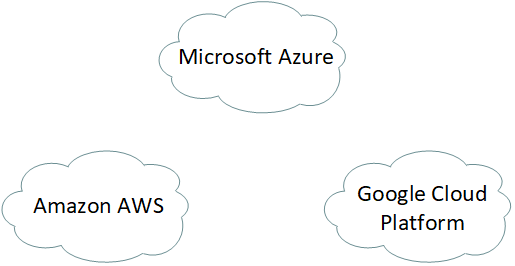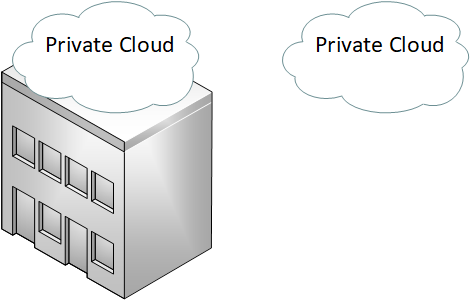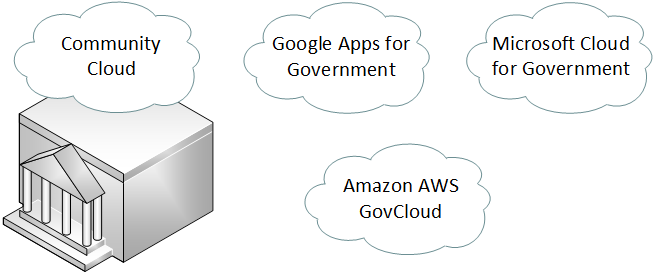Lesson Contents
According to the definition of the National Institute of Standards and Technology (NIST) there are four cloud deployment models:
- Public cloud
- Private cloud
- Community cloud
- Hybrid cloud
In this lesson, you will learn about these four cloud deployment models.
Public Cloud
The public cloud is the cloud that most people are familiar with. The cloud infrastructure is available to everyone over the Internet. The cloud service provider (CSP) owns, manages, and operates the public cloud. The infrastructure is at the premises of the CSP.

You pay for the services, storage, or compute resources you use. Customers that use the public cloud use shared resources. One advantage of the public cloud is that you don’t need to buy and maintain the physical infrastructure. Your connection to the public cloud could be over the Internet or a private WAN connection.
Examples of public cloud providers:
- Amazon AWS
- Microsoft Azure
- Google Cloud
- IBM cloud
- Alibaba Cloud
Private Cloud
The private cloud is a cloud model where a single organization uses the cloud.The organization or a third party could own, manage, and operate the cloud. A combination of the two is also possible. This cloud can exist on-premises or off-premises.

Organizations that want more control over their cloud or that are bound by the law often use private clouds.
Here are four examples:
- OpenStack
- Microsoft Azure Stack
- VMWare vCloud Suite
- Amazon AWS Outposts
Public cloud providers can also emulate a private cloud within a public cloud. We call this a virtual private cloud. Amazon AWS and Google Cloud call this Virtual Private Cloud (VPC). Microsoft Azure calls this Virtual Network (Vnet). VPC and Vnet isolate resources with a virtual network unreachable from other customers.
Community Cloud
The community cloud is a private cloud for organizations that share common interests. For example mission objectives, compliance policies, and security. This cloud can exist on-premises or off-premises.

Because of regulatory standards and the law, the government and public sector often use community clouds. There are cloud providers that offer community clouds, here are some examples:


